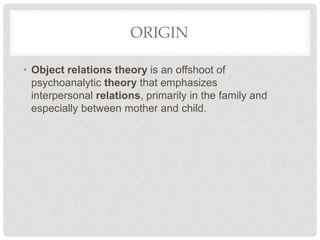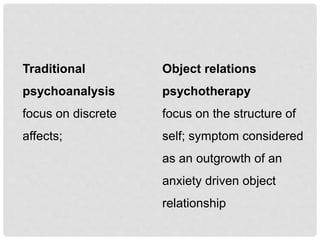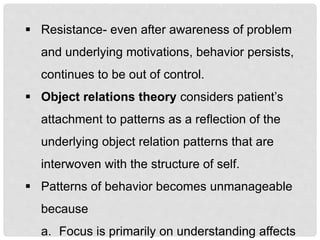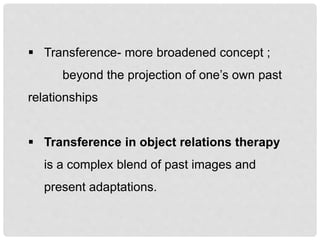The key principles of object relations therapy are that:
1) Children form internalized representations of their relationships with early caregivers that shape their character structure.
2) When a child's needs are not met by caregivers, their development becomes arrested as they suppress parts of themselves.
3) As adults, symptoms arise as veiled expressions of blocked aspects of the self.
Object relations therapy aims to help patients understand defensive relationship patterns and facilitate insight into transference to create new, healthier object relationships with the therapist. This model expands psychoanalysis beyond a focus on discrete affects.























